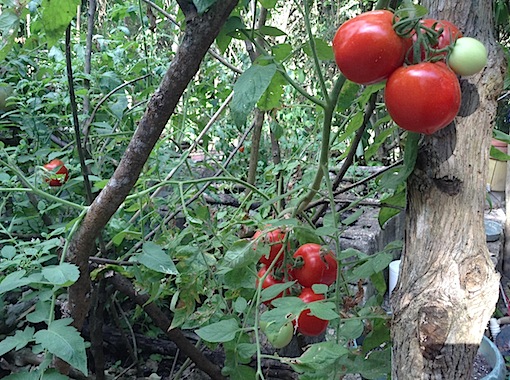
After about 5 years of experimenting and practicing, I think I’m finally figuring out how to grow vegetables in the jungle. I have been covering the soil with torn up paper and cardboard to protect it from the torrential rains and the beating sun. And watering regularly with the liquid from my worm farm which is an incredibly great fertilizer.
These tomatoes came from a package of heirloom seeds that had a variety of types. This type grew first and has incredible clusters of ripe juicy red tomatoes.
—-
These ones have grown huge, like melons, and still haven’t turned red. I’m wondering if they are a variety that stays green / yellow.
—
Most of these ones grew solo, but the more recent ones seem to be a bit smaller and in pairs.
—
I think this third type is Roma.
—
They are growing in large clusters and are more oblong shaped than round.
—
It looks like i am going to have lots of them soon!!
—
My squash plants are doing really well … you can’t quite see but there are flowers in under the leaves.
—
I grow a type of perennial spinach that is really successful in the local soil. Once a year it becomes infested with a worm that comes out at night and eats all the leaves so I cut it all back and start again. It only takes a couple of weeks for it to be lush and edible again.
—
The chives aren’t looking great right now … they tend to do this during the hot season. I don’t worry too much because as soon as the rains start, they fill in their plot again.
—
Oregano is a super weed here. I think this one is technically called Mexican Oregano. I use it more medicinally than for food.
—
This is another one of my medicinal herbs in the garden … it is a bush called “Chichipin” (or Ix-canaan in Mayan). It grows everywhere here, but people treat it like dandelions and it is rapidly chopped out. However, its leaves and berries are full of natural iodine, and are excellent as a natural medicine, as well as food for the parrots.
—
This photo shows the deep red berries and in the background, the orange flowers. Many leaves also turn rusty red in color at different times in the plants cycle to show how full of iodine they are.
—
This bush is called Santa Maria and is mostly used as medicine or as a delicious anise-flavored tea.
—
The giant leaves can be wrapped around fish to add a delicate anise flavour to the meal, or the stems can be peeled and chopped and added to salads.
—
This is Hierba Mora … one of my Natural Crops. It is a wild plant that grows in this spot in my garden at certain times during the year. The leaves are used in soups or stews or in scrambled eggs, and i feed the berries (there are some ripe purple ones on the left side) to the parrots … they are incredibly healthy.
—
And this is the garden in its entirety … with the oregano at the highest level (to the left), squash in the next, spinach and chives, then lots of tomatoes.

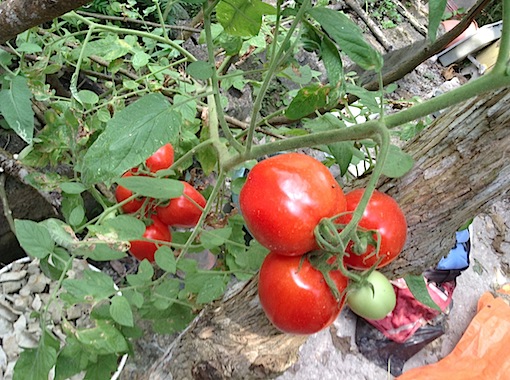

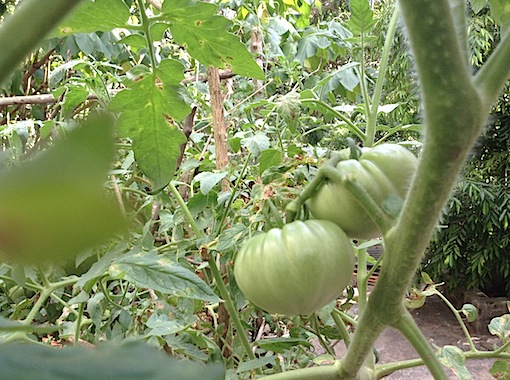

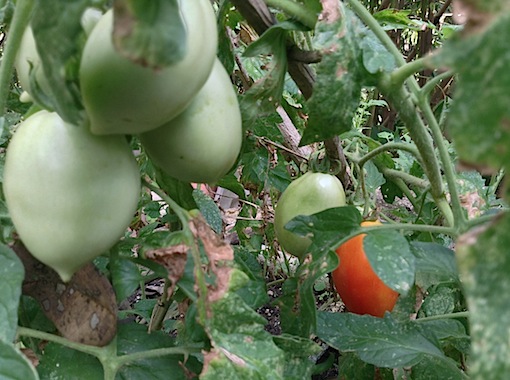
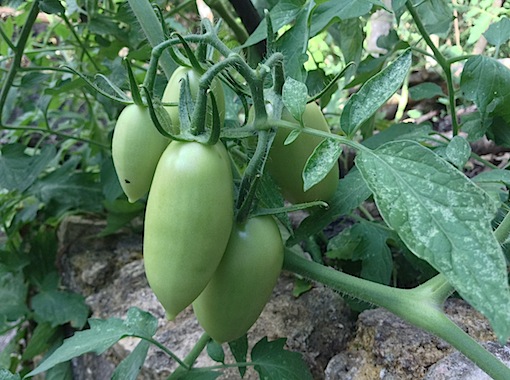


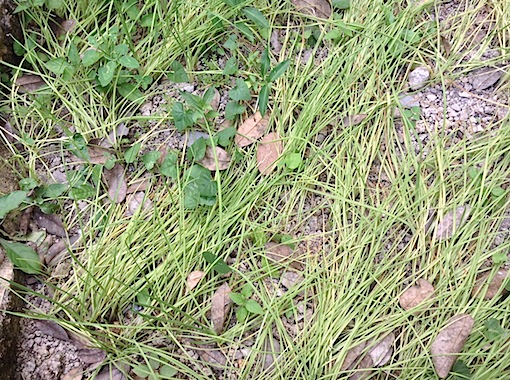

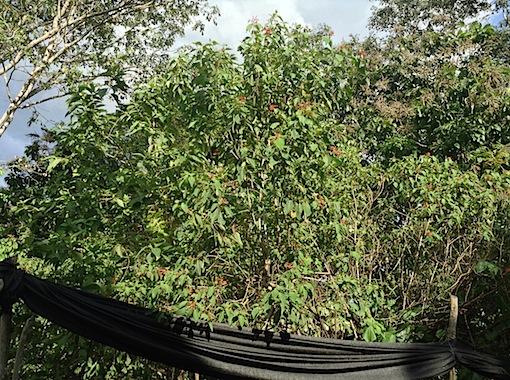
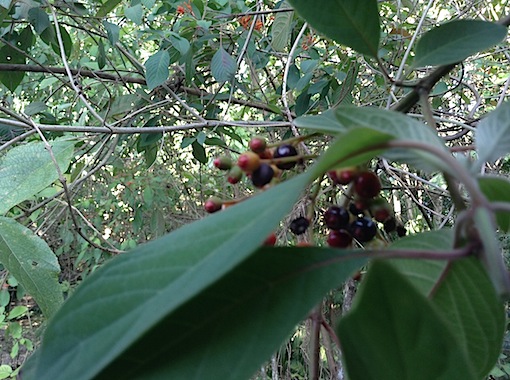
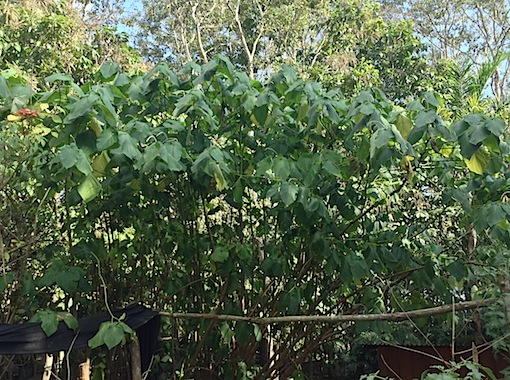
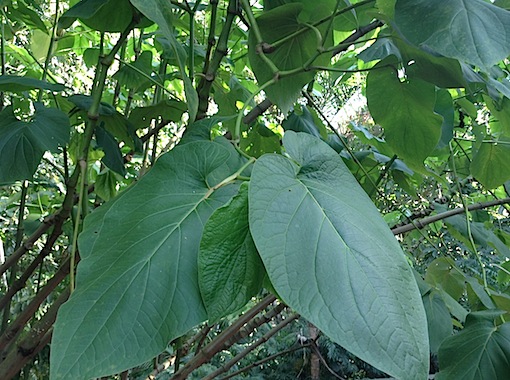
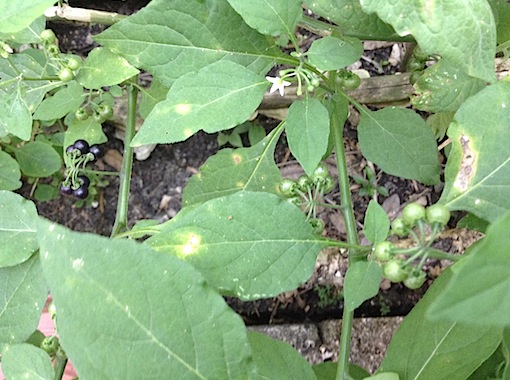
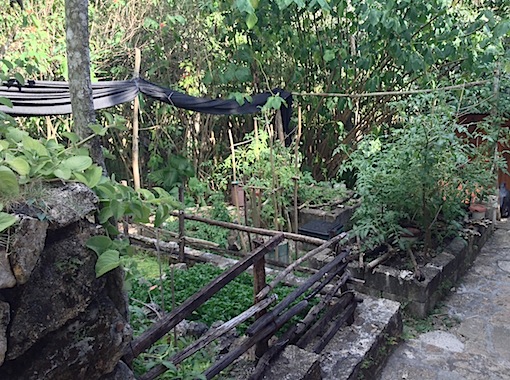
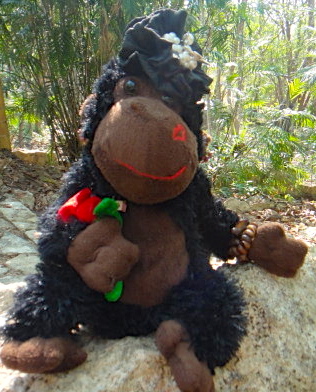
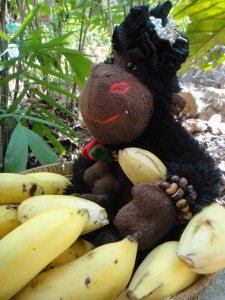
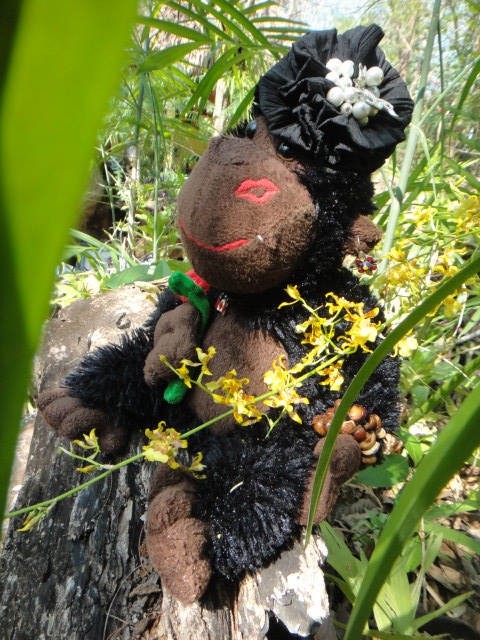
Hi Anne
Great news about your garden. There is nothing like experimentation, as opposed to trial and error, to eventually figure things out.
Besides my broccoli and wild greens that wintered over nicely, I am growing snap peas right now (it was 30 degrees F this morning, again) because that is all that we can do this time of year. Tomatoes are a far off fantasy at this point. We were able to pull a mixed greens salad last week, but that was everything that was ready at the time.
Talk to you soon!
Terry
wow … not bad to already be eating something from your garden at that latitude!!